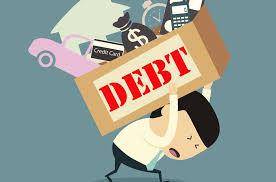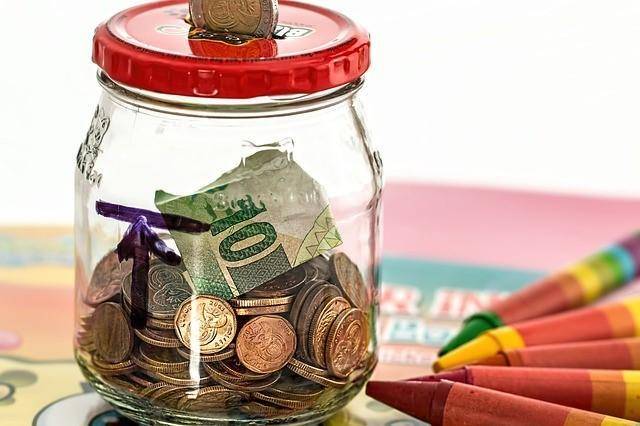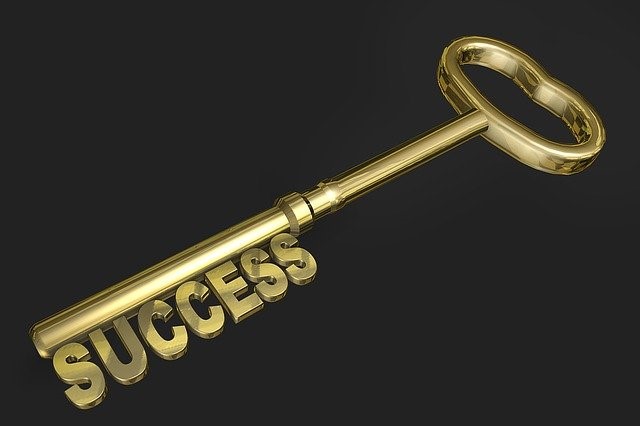
Today we are going to dive in DEEP on your favorite subject…Budgeting.
U.S. Bank completed a study showing only 41% of Americans use a budget. There was another study that showed 70% of Americans don’t even have $1,000 in the bank to cover an emergency. (Get the details here.)
There are two reasons you want a budget: 1) Pay off your debt for life! 2) Keep more of your money in your pocket. This guide is going to teach you how to create your budget, how to use it, and prevent financial restrictions.
What is a budget
Here is the question I have gotten the most from people around me ever since I finished my accounting degree. What exactly is a budget?
A budget is a guideline that shows you what you owe and how much money you have to pay it. Ideally you want to make sure your income is higher than what you owe creditors.
A budget is also a guideline that can show you what kind of plan will help you pay off your debt. Don’t worry; all of the steps to follow are going to help break this process down piece by piece to help you achieve this goal.
Why you need a budget to pay off debt
Before we jump into the exact steps of creating your budget let’s get into the why. You want a budget to prevent your money going to the wrong places.
Example: If your goal is to pay off your debt for good you want to make sure your debt is what’s getting extra payments every month.
Every time I go out shopping with a friend of mine she always wants to stop inside of a jewelry store. We constantly joke about her inability to walk past shiny objects.
But in all seriousness I have seen her spend an entire paycheck on a piece of jewelry. Yes, she spent all of her money (money that took her two weeks to earn) on one item.
She missed her car payment and car insurance payment that month. The lesson, your debt will always haunt you if you do not send your money to the right place. There will be plenty of time to make purchases such as these once your debt has been paid.
To prevent this from happening you will want to create your budget. This is the best road map I know of to show where your money is going.
How to review how much your expenses are every month
Now we are getting into the work of creating your first budget. If you follow these steps you can have this done in an hour or two. The best part about this is you only have to do it once.
You can carry the plan over to the next month. I haven’t had to build a budget from scratch in 3 years.
The only time you may have to rebuild your budget is when your financial situation changes. Things that can change your financial situation is buying a new car, buying a new home, getting a new job or pay raise, getting married, etc.
I have two different methods for reviewing your expenses, the highlighter method and the write it out method. They aren’t fancy but they work. Choose the one that is easiest for you.
Before you choose either one this is what we are looking for. I want you to categorize your expenses into the categories below:
- Mortgage/Rent
- Utilities
- Groceries
- Clothing
- Eating out (Restaurants, lunch cafeteria’s, food trucks, etc)
- Debt (credit cards, car loans, student loans, home improvement loans, etc)
- Purchased Wants
Let’s talk about the purchased wants category real quick. These are items you purchased while out shopping for fun.
These are items you or your family didn’t need for survival and purchased for pleasure. Like in the example of my friend buying her jewelry we want to know how much those purchases cost each month.
These wants should be everything else you spent money on.
The Highlighter Method
Ok, this method requires you to print out last month’s bank statements and credit card statements you have.
You will want to assign a different color to each category above. Make sure to document which color you are assigning to each.
Go through each statement highlighting each category with its corresponding color.
Once you have completed this piece of the task add together the amounts of each color.
Example: For every item highlighted in yellow add the dollar amounts together to get the final number. This is how much you spent on that category last month.
Write that final number down next to the category assigned to that color. Do this for each category. We will review this number in a later step.
The Write it Down Method
This method may take a little more time than the highlighter method but it can be easier to track by listing everything for each category in one group. (In the highlighter method your categories are intermixed and across several pages.)
You can either grab a notepad and pen or type up a word document for this one. You will still need a copy of every bank statement and credit card statement from last month.
Then title a different page with each of the 7 categories listed above. Under each category you are going to write down the company name and amount of each purchase listed on your statements.
Just like in the example for the highlighter method you will add all of the amounts together for each category to get the final number for each.
If you add the totals of each category together, this will give you the total amount you owe to creditors every month.
Keep in mind there are certain months where you will have yearly expenses surface that you need to include in your expenses.
Example: property taxes at the end of the year.
How to review your total income for every month
Calculating your total wages for each month is going to be a breeze after going through your expenses.
This is going to be even easier if you receive a steady salary. Look through the bank statements where your paychecks are deposited. Add together how much you were paid in total last month.
Here is something I want you to take note of, if you get paid hourly, or your monthly pay changes from month to month, you will want to complete this task on a regular basis.
The reason why, you need to see what the minimum amount you can survive on is.
What to do if your income changes every month
If your income constantly changes every month you need to review the reasons why.
Are you working a seasonal job such as construction or holiday only positions? Is your boss sending you home before your shift is over and you’re paid hourly?
Do you receive monthly commissions that boost your income or do you get paid only with commissions?
Here is my concern with only getting paid by commission. I understand you have the potential to earn stupid great money but in the slower months you could be devastatingly poor.
If you are in a job such as this I would consider working a part time job to pick up the slack during those extremely slow months.
I also recommend you carry a second job if you are in a seasonal job or construction. You know when the slow months will occur for these positions.
For other situations, consider having a one on one meeting with your boss. If you are being sent home before your shift ends, or if your hours are being cut find out why.
Explain to your boss the minimum amount of hours you need on every paycheck to pay your bills.
Basically, negotiate for your piece of the pie. I did this during my college years when I worked as a cashier.
My boss didn’t realize she was cutting my hours so short. She thought she was giving me a gift by letting me go out with my friends on Friday nights.
Yes I know what kind of nerd rather work than go out on a Friday night? One who is living on her own and dedicated to never living with her parents again! 🙂
What do your total expense number and income number mean
Alright, we are cruising through this! I want you to look at your expense total and income total to answer this question. Which number is higher?
The ideal situation is for your income to be higher than your bills…always.
Answering this question is crucial to building your budget. This is going to tell us what your next steps need to be to put more money into your pocket.
If the total cost of your bills are higher than your income we need to look at why. Which three categories are you paying the most in?
What can you do to bring those costs down? Maybe it is your rent, debt, or car payment that are your three highest.
Consider decreasing how much you spend on eating out and your purchased wants to help alleviate the pressure. The other option is to get a part time job to bring in more money to pay your bills.
If your monthly income is higher than your bills you are on the right track. My question to you is how much extra cash do you have per month after your bills are paid?
My very first budget when I was 19 years old I only had $50 dollars left over each month. Since I was in college I wanted to work part time to leave me time to study after class.
To get more money I decided to cut out clothing and want purchases.
Now stay with me here! You don’t need to go this extreme. I chose to do so for 2 simple reasons.
My most prized want at that point in my life was my education and I had more than enough clothing. I don’t wear my clothing out that fast.
Going another 3 years without a new piece did not bother me at all. The best way to tackle this is to answer these two questions for your-self.
What decision is going to put more money in your pocket?
What can you easily live without?
Don’t make it too challenging for yourself or you won’t stick with your plan.
Which budget method should you use and how to use it
If you have been researching budget methods for a while then you know there are several methods available to you.
Some require spreadsheet calculator’s, being a master of accounting terminology, or a lot of self-control. The method I’m about to recommend is easy to start and perfect for beginners.
I recommend you give the two checking account method a try. Ok, I know the title sounds a little overwhelming but here is how it works.
One checking account is responsible for paying your bills every month. The other checking account is for your want purchases, eating out, and unexpected purchases.
We have already calculated your total expense number. That is the amount you will put into your monthly bill account.
Now, your utilities and grocery bills can fluctuate from month to month until you get into habits for keeping those bills low.
(If you download my free ebook by subscribing I give you a lot of shortcuts on how to keep these bills low you won’t find anywhere else.)
[mc4wp_form id=”77″]
So I recommend you budget for what you paid on those bills last month plus 10%. Example: if last month’s electric bill was $115 the math would be $115 x 0.10% = $11.50.
The total you would budget for would be $126.50 ($115 + $11.50). This will help you anticipate increases.
An easier way of doing this would be to log into your utility accounts online to see how much you paid during that month last year. Then you can budget for that while working towards new money saving habits.
Additional rules to the two checking account method:
- Don’t carry a debit card for the account paying your bills.
- Do not borrow funds from the bill account.
- Just because you have an account for wants and restaurants doesn’t mean you have a license to spend it all.
- Make sure you always have gas money in your wants account since that is the debit card you are carrying.
- Every payday divide your money across the two accounts based off of your expense number. (Do this before you start spending money from that paycheck.)
*note: If you get paid on the 15th of the month and then two weeks later the 28th of the month, make sure to move the money for the bills due between the 15th to the 28th from the first paycheck.
Then move the money for the bills due from the 29th to the next paycheck from the paycheck you receive on the 28th.
Benefits to this method:
- This will help you get into the habit of not overspending every month.
- You will always have the money you need to pay your bills.
- You don’t have to stress about watching your account daily.
How to stick to my budget
This is not going to be a break through answer. The best defense for sticking with your budget is by setting goals.
Why do you want a budget that works?
Do you want to pay off your debt for good? Do you want to build your savings account?
Do you want to finally have more money in your pocket to take exotic vacations?
Whatever your goal is write it down. Then hang it in a place that forces you to see it every day.
Some suggestions; the refrigerator, the bathroom mirror, make it a screensaver on your cellphone, etc.
Every month you use your new budget the easier it will be. I promise this will become second nature to you.
Why does every budget guide tell you to save money
The reason why you are always told to start saving money when you budget is because it keeps your budget on track.
I know it’s extremely hard to save money when you are swimming in debt.
But consider this scenario, you have been sticking to your budget for 6 months and are finally able to see improvement in your finances.
Then your car breaks down. This happened to me once my car needed breaks and a radiator.
I had to charge it to my credit card. I recharged the amount that took me a year to pay off.
Most emergencies in life are a minimum of $1,000. If you don’t have a savings account to access then you will wind up charging a credit card.
The previous 6 months of paying down that card is now right back where it started. Would you still have motivation to keep going after that?
Think of your savings account as an insurance policy for your budget. Even if you can only save $20 per month it will help.
How to use my budget to pay off my debt for good
My budget is a crucial piece of paying off my student loan debt. Since I know where my money is going every month I know how much extra cash I have to put toward my student loans.
If you have more than one debt account (credit cards, loans, mortgage, etc) then your budget can help you choose which debt to try to payoff first.
Check out my Debt Snowball vs. Debt Avalanche post here for more detail on this.
Only pay extra on the debt you are paying off and pay the minimum balances on the others. Your budget is just the road map to help you make educated decisions with your finances.
Concluding Thoughts
I know there is a lot of information within this budget guide. But here is a quick summary for you.
A budget is a guide that shows you how much you make as well as how much you owe. You need a budget to prevent your money from going to the wrong places. It helps you make your money work for you.
You can use the highlighter method or the write it down method to find out how much your expenses were last month. Your goal is to make sure your income is always higher than your expenses.
If your income changes every month either negotiate more hours from your boss or consider a second job.
I strongly recommend starting with the two checking account method. It will help curb your spending and make sure you always have money to pay bills.
Write down your goals then post them somewhere you will see it constantly. Consider starting a savings account.
This will protect your budget when emergencies occur. Once your budget is built use it to decide which debt to start paying extra on.
Remember, you are not alone on this journey!
If at any time you have questions please don’t hesitate to email me at ask@howtobudgetnow.com. I started this blog to help others in any way I can. 🙂
Also, if you would like to keep up with all of my posts or want a FREE copy of my ebook on How to Save Money on Your Utilities” subscribe below. My ebook contains ways of saving money you won’t find anywhere else.
Don’t worry I will never spam your email. I can’t stand those either!
[mc4wp_form id=”77″]
Subscribe and you'll receive our weekly posts right in your inbox. You'll also be one of the first to be notified when our free budget course opens. Hope to see you there!




